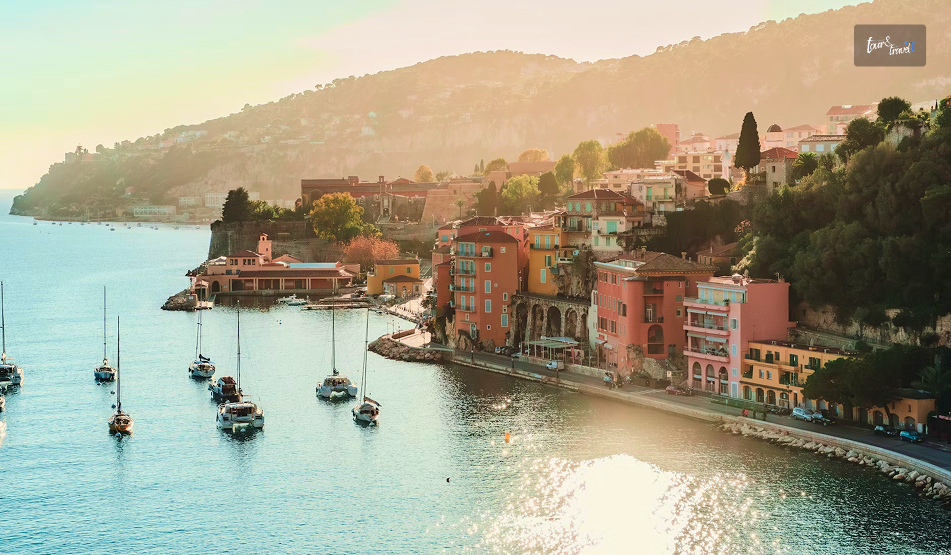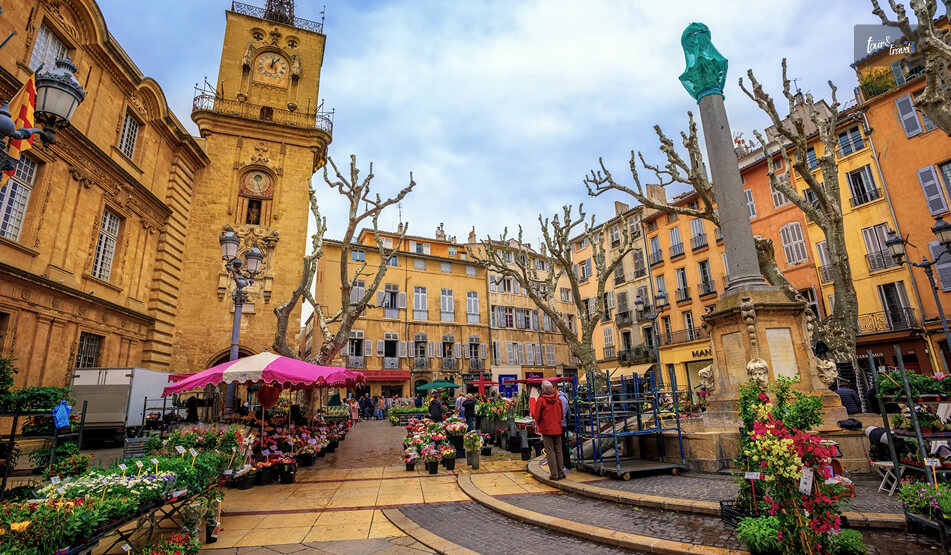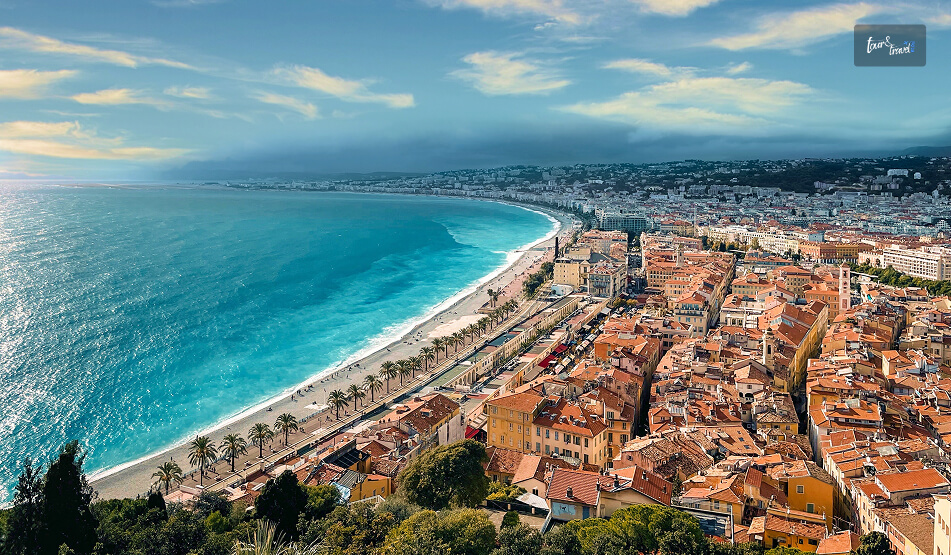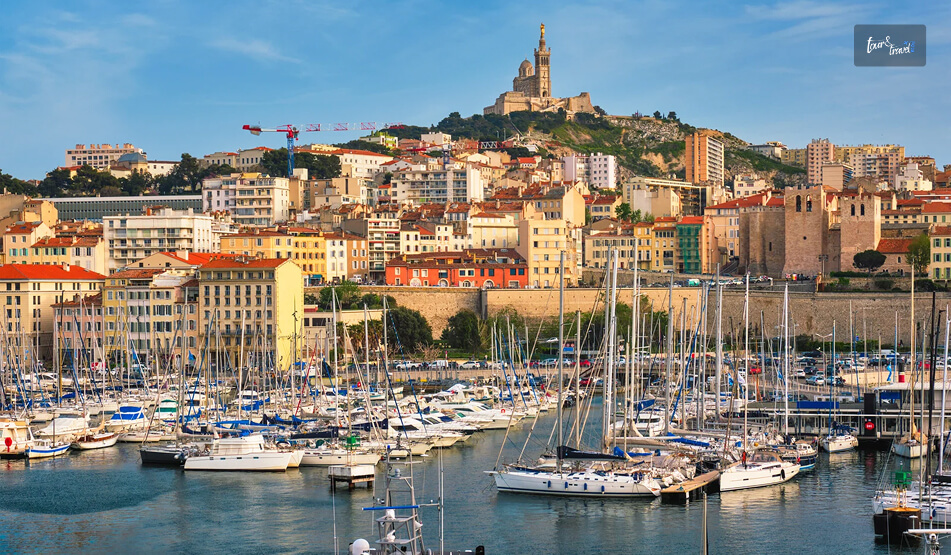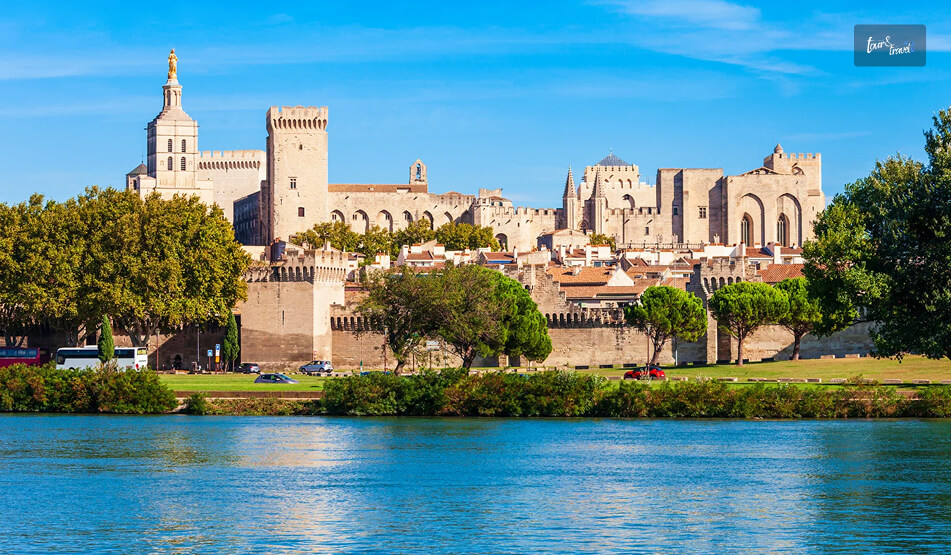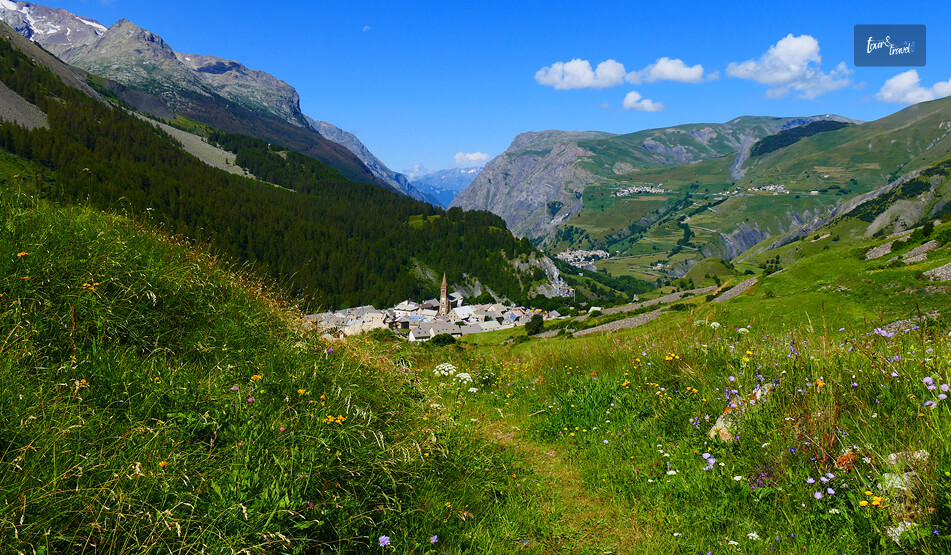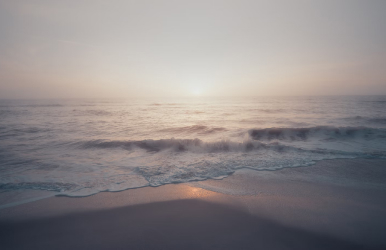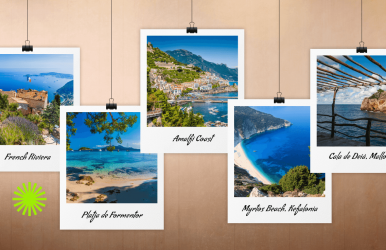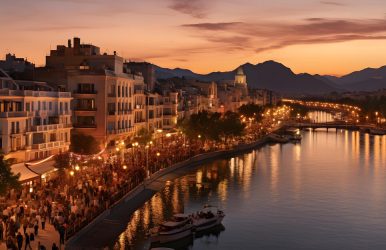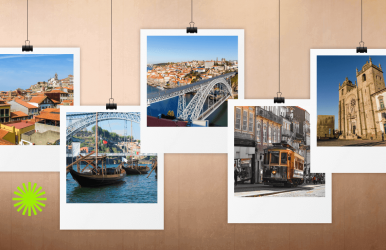Best Summer Destinations In Europe Beach: Couples Get Ready!
BY Sibashree Apr 21, 2025
Europe is a significant player in the global beach tourism industry, holding a 38.3% share. Further, the thriving beach tourism scenario in Europe has the solid backing of the European Commission. The Commission is supporting all European countries with beautiful beaches through action plans, smart strategies, and sustainable growth initiatives. Therefore, it is no surprise that by 2032, the European beach tourism industry is expected to reach $357 billion. Now, as a traveler, if these stats look mundane to you (I love them as I think traveling is all about touching and improving lives, and you cannot do that without an economic boost!), the glorious stretches of sand and the dramatic landscape give you enough reasons to plan a trip. In this Tour and Travel Blog, I have curated the most popular summer destinations in Europe, along with the hidden gems. So, couples, you know where you need to sail for some serious coastal fun! The Best Summer Destinations In Europe Beach: Forget The Count! Think of the dramatic landscape of the Mediterranean Coastline. Some are sandy and fun, while others are gothic and involve a lot of drama. On the other hand, the Atlantic beaches are full of marshlands, inlets, and barrier islands. Now, despite the difference in the landscape and coastal geology, beaches are the best summer destinations in Europe, thanks to long hours of Sun and pleasant weather conditions. Also, summer months are ideal for various outdoor activities on the beach, including sunbathing, swimming, and scuba diving. Furthermore, intimate activities such as sunbathing against the serene water backdrops make the beaches in Europe ideal for summer romance. Moreover, I cannot think of a more romantic venue for a candlelight dinner than the Mediterranean beaches in Europe. Here, I present the beaches I have been to in Europe, and while there are some regular staples on our list, mostly I have talked about the beaches that have impressed me the most. 1. French Riviera: Plage Notre-Dame Porquerolles Was Our Sweet Spot ‣ Closest Airport: Nice Côte d'Azur Airport (NCE) With approximately 180 km of coastline, the French Riviera, the setting of popular movies such as GoldenEye and Hitchcock’s To Catch a Thief, is dotted with stunning beaches. The over 90 beaches in the French Riviera offer an unmatched diversity. So, you have beaches like Pampelonne, where the vast sandy stretches will grab your attention. On the other hand, the French Riviera boasts Paloma, an adorable spot with its dramatic pebble beach. However, we found our sweet spot at Plage Notre-Dame Porquerolles, a beach that is just 15 km away by a water taxi ride from the French Riviera. Porquerolles, one of the best summer destinations in Europe, is a not-so-developed island with a length of 9 km and a width of 2 km. So, we started our day by bicycling through red trails. The eucalyptus trees on both sides of the trail blessed us. After the ride, we visited the contemporary art museum at Villa Carmignac and enjoyed the best rosé champagne and local delicacies at their outdoor dining setup. We came back to the beaches by noon, and the cafes with the musicians playing the old-day tunes created the perfect backdrop for the change of shades and lightplay we were witnessing on the sandy stretches. And it was sunset time! We knew we had to take a dip. We could listen to the grinding of cicadas and see how the last rays of the Sun for the day weave magic on the sand and water. After our moments in the water, it was our time to get back to the French Riviera. We had a great time at the beach with memories of broken wooden chairs and weary bicycle stands as beautiful frames from a movie. Au revoir, Porquerolles! ⁕⁕⁕ Tour And Travel Note ⁕⁕⁕ Don’t miss a visit to the resort town of Nice if you are in the French Riviera. It is one of the best European cities with beach and nightlife. 2. Amalfi Coast: A UNESCO World Heritage Site And The Prettiest Coast Of Italy ‣ Nearest Airport: Naples International Airport (NAP) The Amalfi Coast requires no introduction. From beaches with dramatic rocky coves to those with sandy stretches, every beach stands out with its unique appeal, and Mediterranean delicacies here are out of this world. Nevertheless, among all the beaches, Fornillo Beach in Positano won our hearts. With pebbled beaches and fewer crowds, everything about the beach defined the word “intimate.” It was our Punto Dolce, where we enjoyed all the beach chores to the fullest. However, the highlight of the visit to this beach was exploring the nearby Grotta di Fornillo, as the scenic views were amazing. 3. The Egadi Islands: The Best Fusion Of Natural Beauty And Ecological Attractions View this post on Instagram A post shared by Giovanni Vasta (@gvasta2) ‣ Nearest Airports: Palermo Falcone-Borsellino Airport (PMO) and Trapani-Birgi Airport (TPS) Also known as the Egadi Islands, these islands in Italy are some of the best European summer beach destinations. Our destination was Favignana, which has beautiful beaches, such as Cala Azzurra and Cala Rotonda. However, our favorite among all was Bue Marino. The rocky coastline here is unique, and we fell in love with the sunrise views. Furthermore, we decided to explore Favignana, and we took a ferry to the nature reserve of the Saline Trapani. It is around 40 minutes to reach the nature reserve. This Ramsar Site, and a protected area entrusted to the World Wildlife Fund is home to the rare Aphanius fasciatus fish. Further, we saw birds like the Saker Falcon and the Common Shelduck there. 4. Platja de Formentor, Majorca: A Calm Beach With Green Water ‣ Nearest Airport: Palma de Mallorca Airport (PMI) A calm “Blue Flag” beach located along the Formentor Peninsula, Platja de Formentor is surely one of the best that Majorca Island has to offer. The landscape here defines the word drama, and the sight of the Tramuntana mountains amidst dense pine forests will stay in my memory forever. Furthermore, the blue and green colors of the water complement the backdrop. The beach is not very long, and we took a walk of around 1 km to reach Cap de Formentor, the farthest point of the beach. Also, we took a ride in a rented sailboat. Catamarans are also available for rent. You can even try snorkeling for more adventure. 5. Myrtos Beach, Kefalonia: A Romance With White Sand And Turquoise Sea ‣ Nearest Airport: Kefallinia (EFL) Airport One of the best summer destinations in the world, Myrtos Beach in Kefalonia, Greece, has our hearts for its stunning natural beauty. The beach, awarded a “Blue Flag,” features stretches of white sand with the most dramatic cliffs in the backdrop. Furthermore, the turquoise water provides a serene experience for the eyes. 6. Hietaniemi Beach, Helsinki: Best For Summer Swimming And Beach Volleyball ‣ Nearest Airport: Helsinki Airport Hot summer days call for some serious beach fun at Hietaniemi Beach, Central Helsinki, Finland. With its shallow water and picturesque setting, Hietaniemi Beach is perfect for playing basketball and beach volleyball. Also, don’t forget to try the coffee and snacks at Badenbaden, the summer terrace. Want to try your luck at golf? Pay a visit to the miniature golf course nearby. 7. Beach of Durres: The Most-Visited Beach In Albania ‣ Nearest Airport: Tirana Airport The beach of Durres, the most-visited beach in Albania, is also one of the best beaches in Europe. Durrës, as a city, has a rich historical background, with the stories going back to 627 BC. Additionally, the Roman amphitheater was our biggest draw. Additionally, the beach stands out due to its proximity to the Adriatic Sea, a prominent feature in the cultural, historical, and economic landscapes of Europe. Recently, the Adriatic Sea was in the news after a Riesenhai, or basking shark, was seen off the Croatian Peninsula. 8. Fteri Beach, Kefalonia: Romance In A Secluded Beach With Turquoise Waters ‣ Nearest Airport: Kefalonia International Airport Anna Pollatou With rugged hinterlands and candy-colored houses, Fteri Beach in Kefalonia, Greece, is the prettiest beach I have been to in Europe. One of the best summer destinations in Europe, this beach on a secluded cove has beautiful white cliffs and the bluest water. Don’t miss snorkeling in the water for the ultimate adventure. 9. Praia da Comporta: The Secret Sweet Spot In Portugal View this post on Instagram A post shared by Luis Mendes (@luismendeslm) ‣ Nearest Airport: Lisboa (LIS) Airport One of the best summer destinations in Europe, Praia da Comporta is a hidden gem in Portugal. Summer months are busy at Praia da Comporta. However, the 19-km stretch of the shoreline ensures you get enough space for all the beach fun. We had the most elaborate lunch at the Comporta Café, and we got into the water after hours of swimming. However, the biggest attraction was the horseback ride during the Sunset. The surroundings looked magical. 10. Mala Beach: Cliffs, Sands, And Clear Water View this post on Instagram A post shared by Ekaterina Erokhin (@katiaerokhin) ‣ Nearest Airport: Nice Côte d'Azur Airport I was almost done penning this blog, and then suddenly it struck me. I have missed Mala Beach, another wonder in the French Riviera. With pebbles and sand on the shores, this secluded beach is ideal for some intimate moments with your partner. Further, the views of the majestic Mediterranean Sea and cliffs leave you awestruck. 11. Vitali Beach: Best For The Quiet Romance ‣ Nearest Airport: Athens International Airport Vitali Beach in Andros, Greece, is one of the best summer destinations in Europe if you are planning a coastal getaway. It is one of the quiet ones, too! The shores are full of pebbles. So, it is quite a walk before you reach the blue waters. However, the nearby caves and the best Pina Colada available make every effort worthwhile. 12. Cala de Deiá, Mallorca: Falling In Love With The Rugged Charm ‣ Nearest Airport: Palma de Mallorca Airport (PMI) Cala de Deià, the rugged and bewitching inlet near Deiá, Spain, has a small beach with crystal clear water. This is a place for couples who love everything quaint and a close-to-nature experience. After a fun swim in the crystal clear water, you can have your meal at the Can Lluc cafe and enjoy fishing while sitting on the rocky platform above the water. You can also visit the beautiful hamlet of Lluc Alcari, just 15 km away from Cala de Deiá. Related Posts.. Here is a List of Best River Cruises in Europe! 10 Things You Must Cover On Your Europe Trip These Best Places To Travel In Europe Are Amazing In Winter

